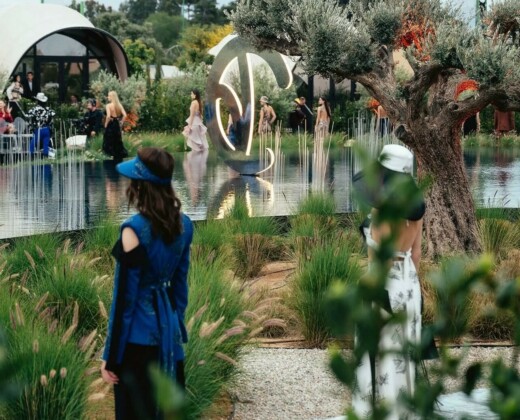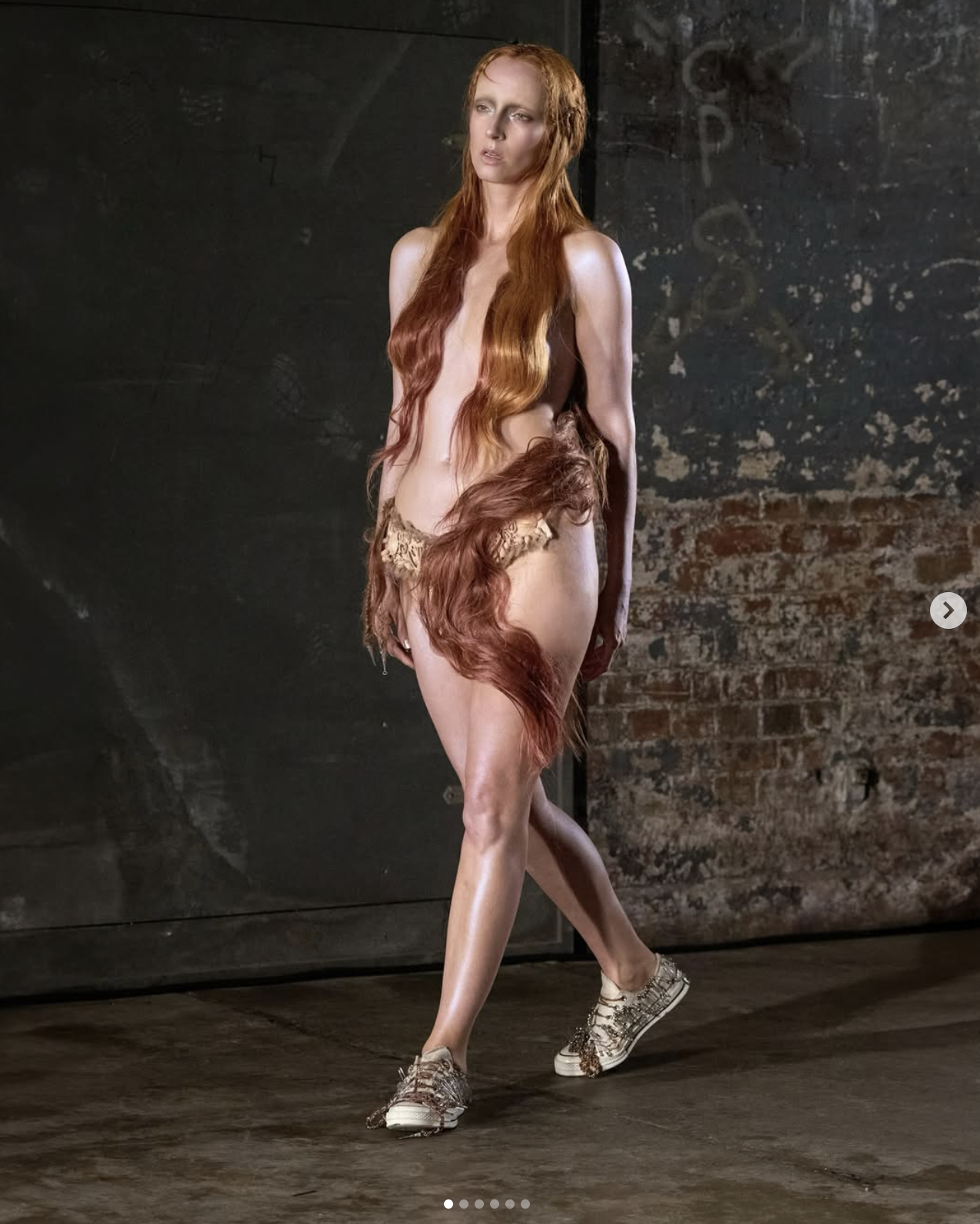
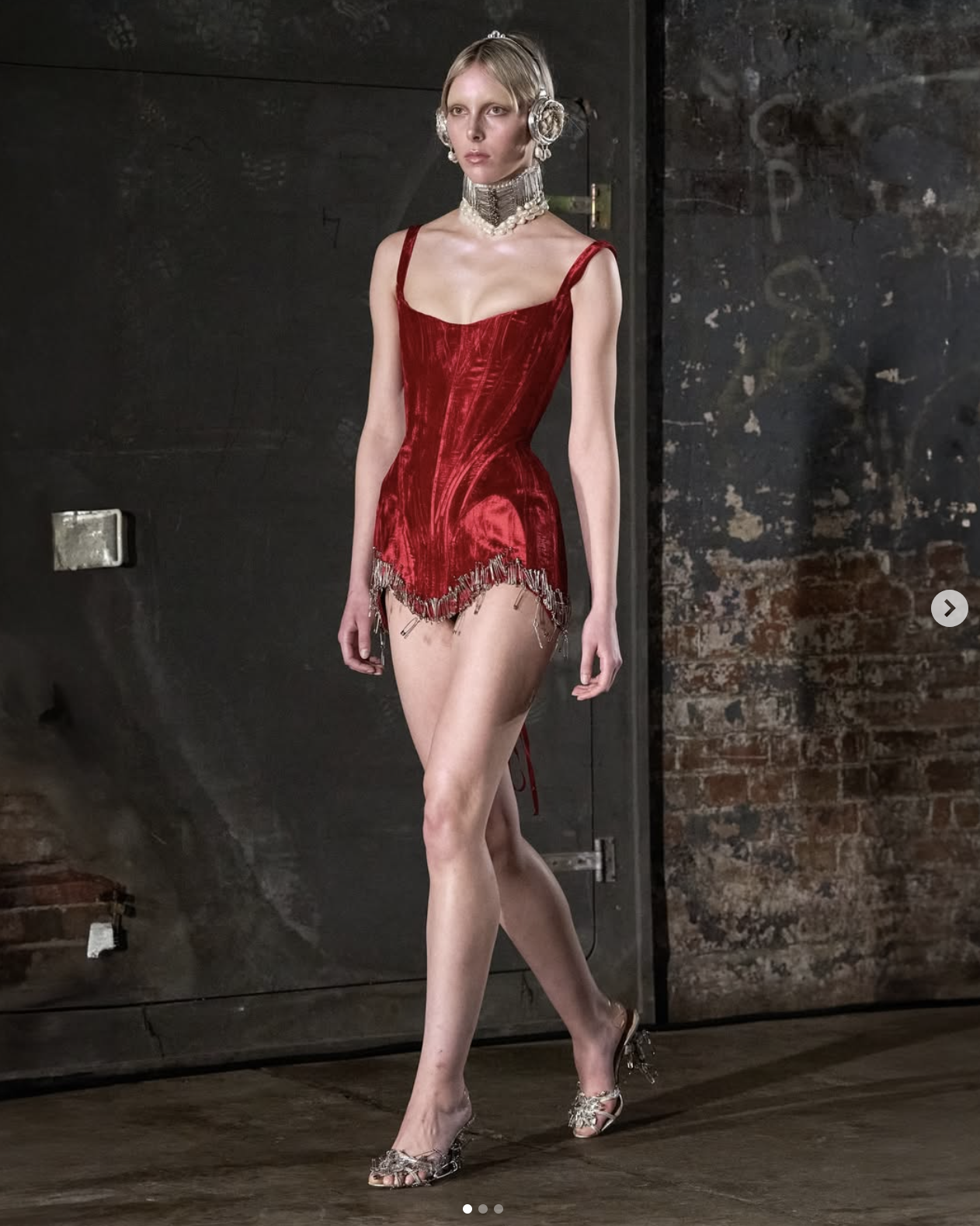
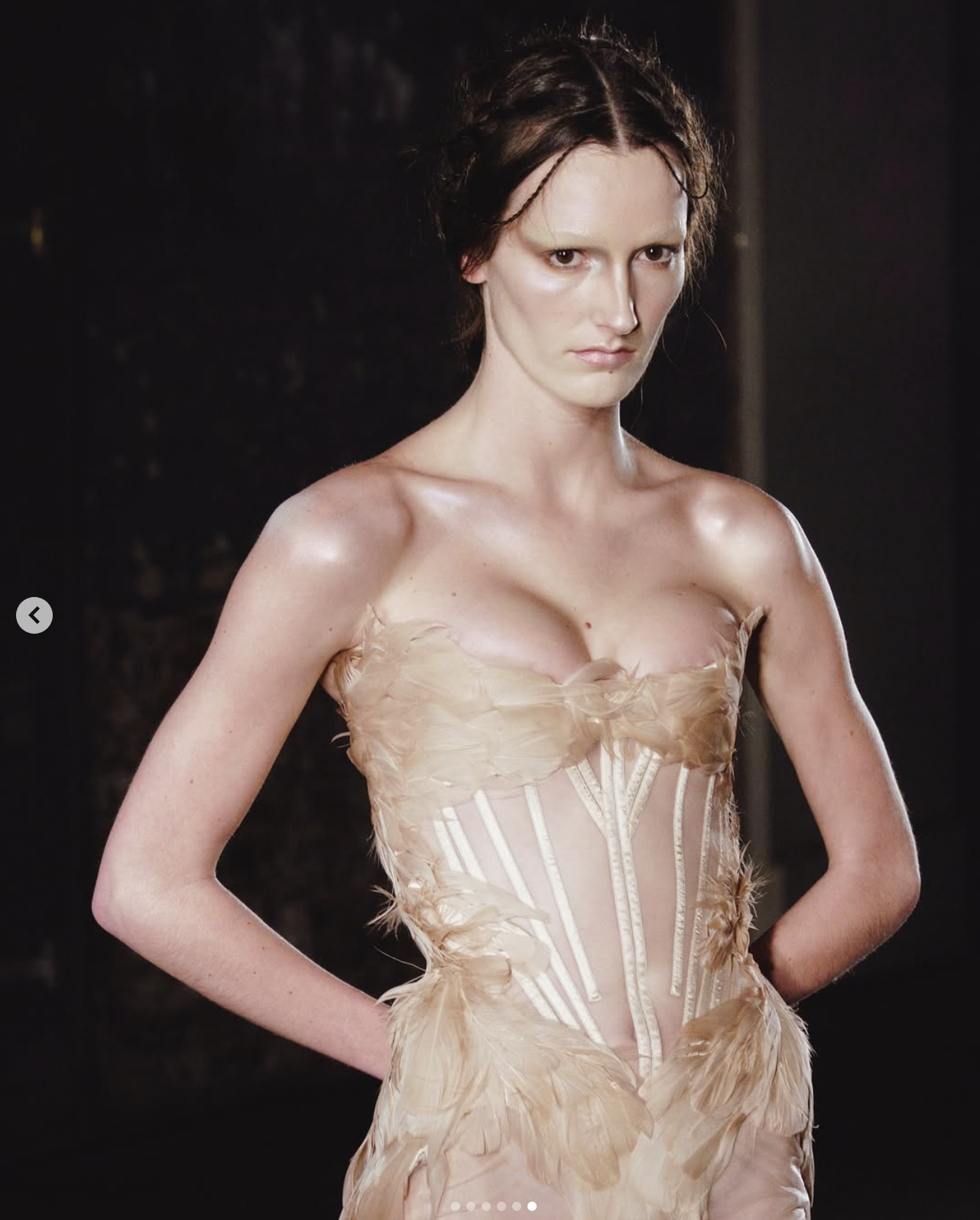
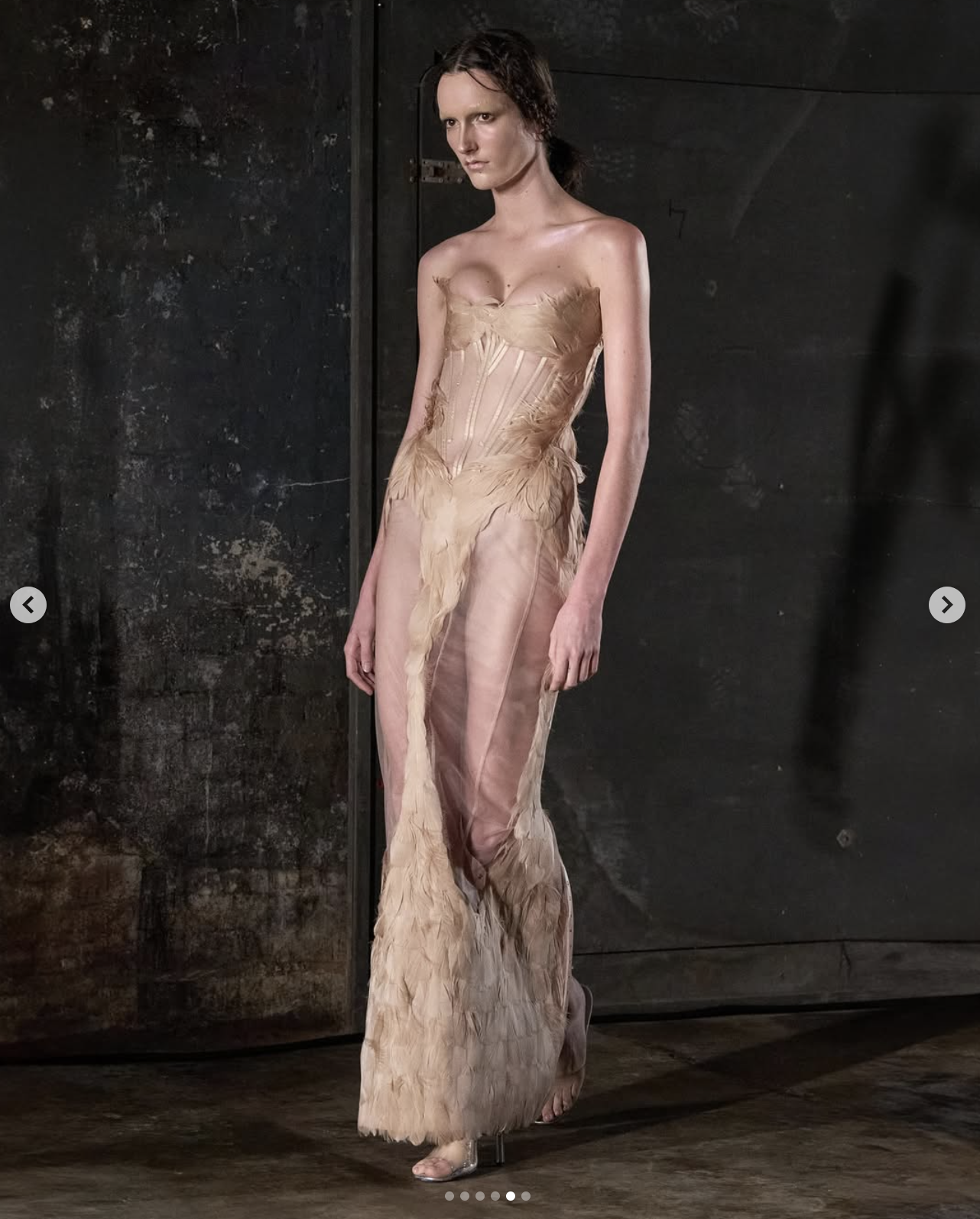
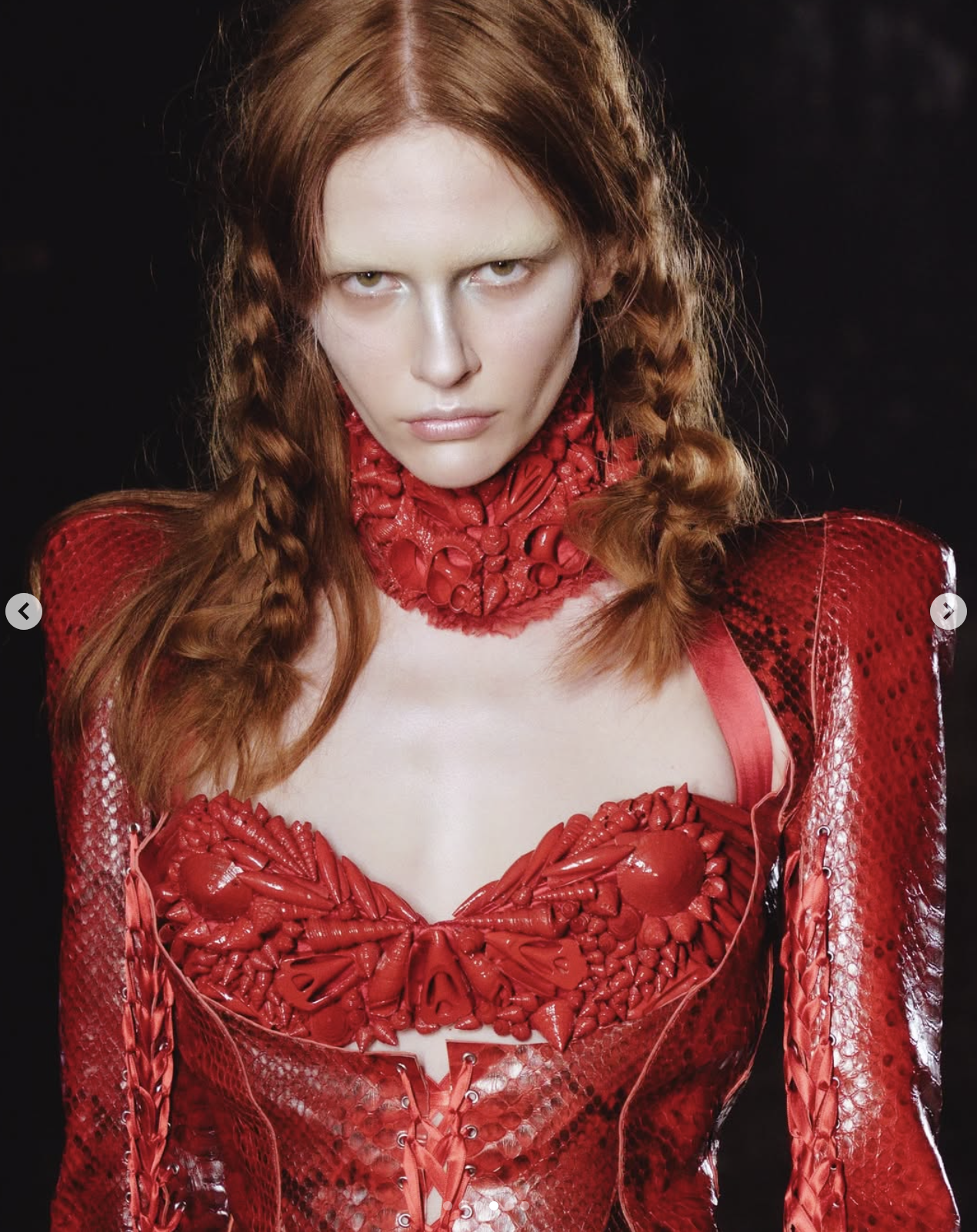
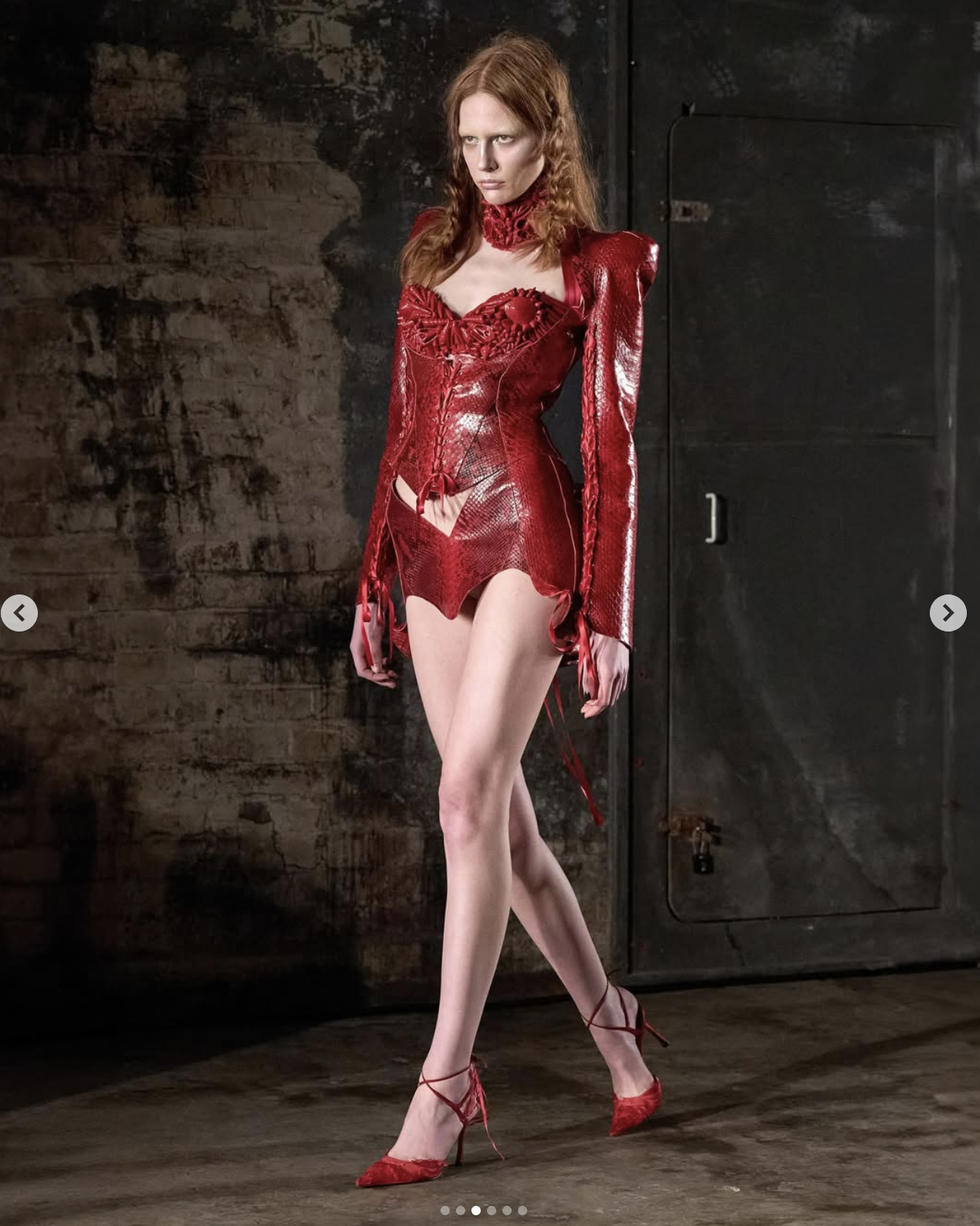
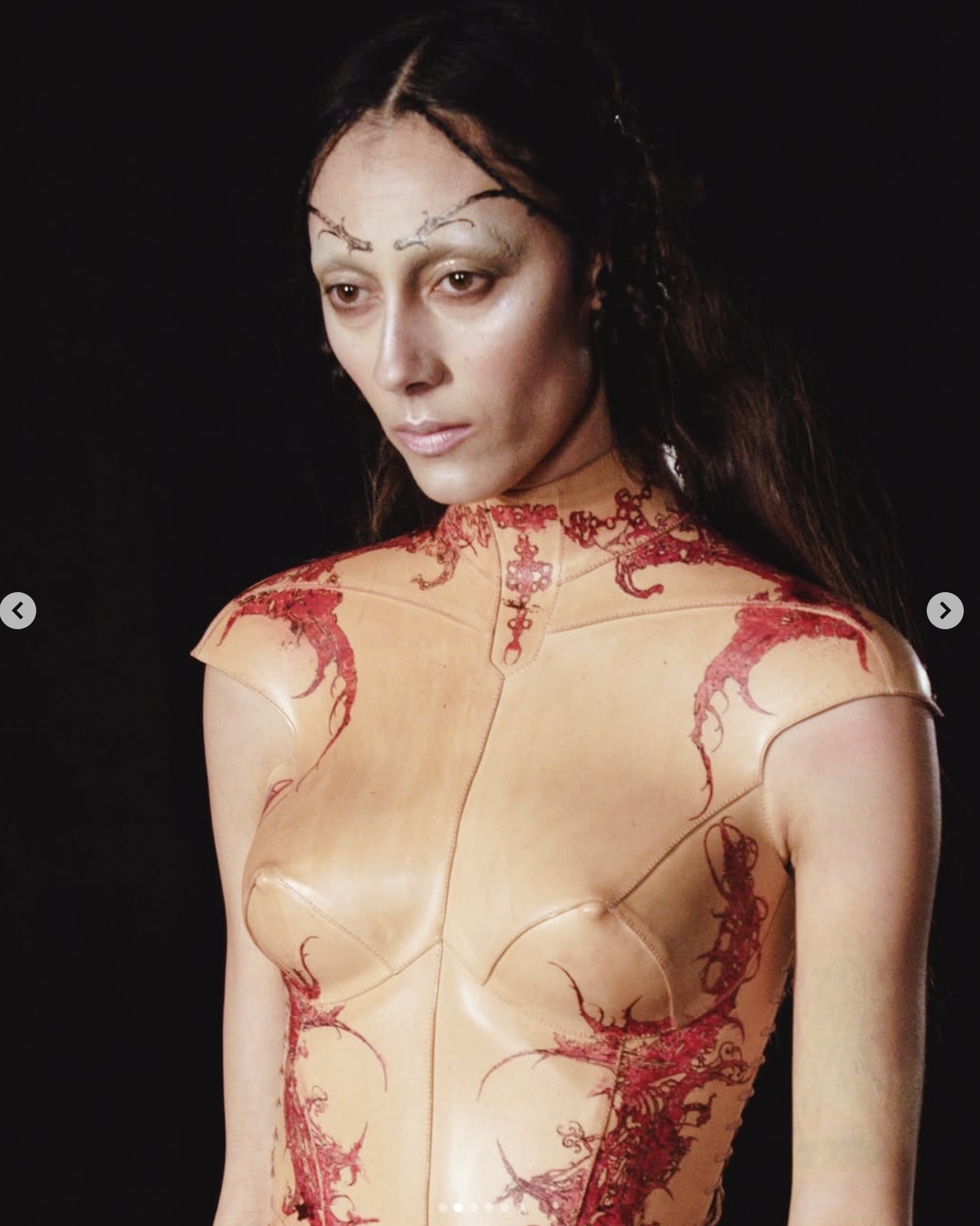
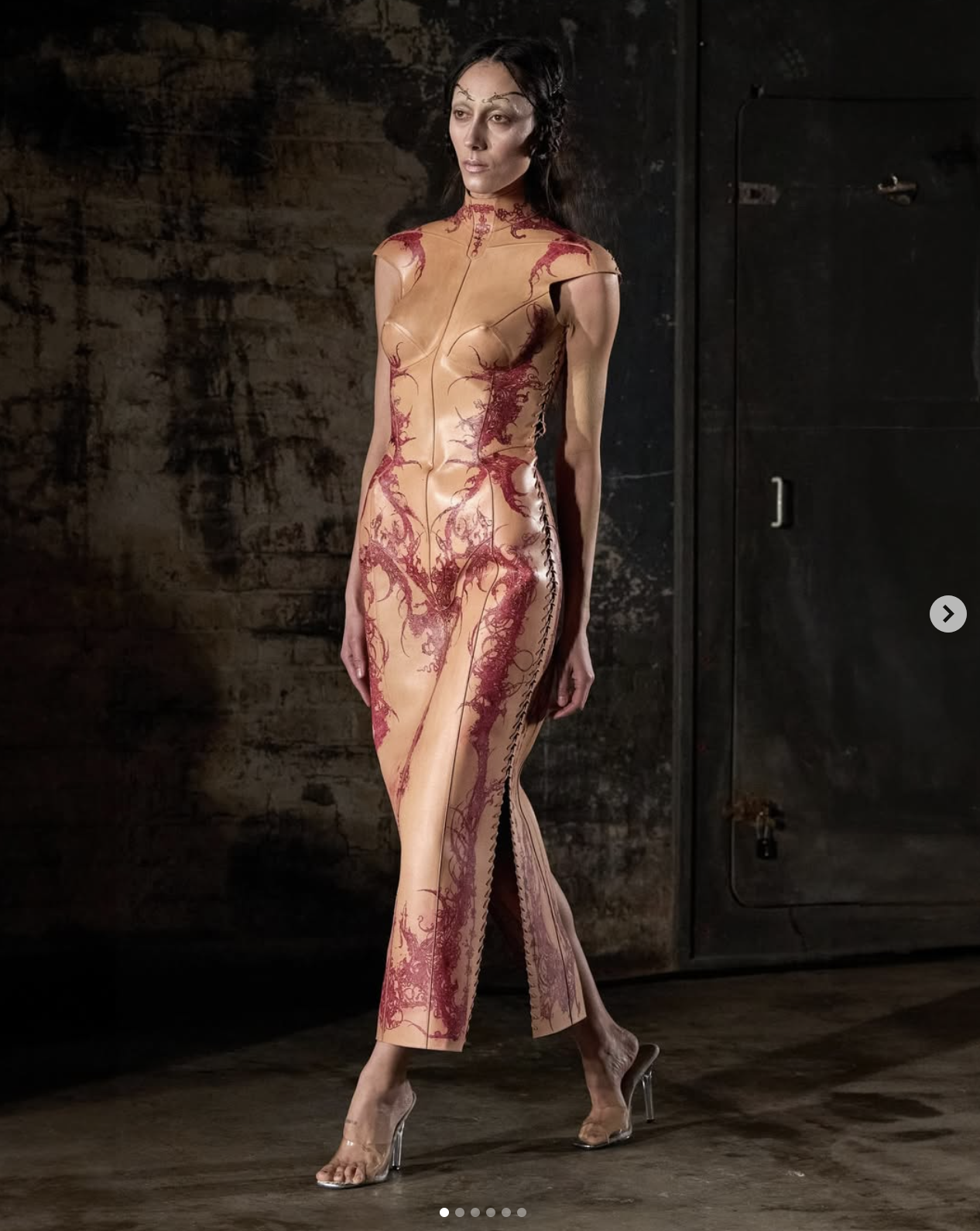
Ethereal. Structured. Powerful. These three words define Dilara Findikoglu’s latest collection, Venus from Chaos, a striking reimagining of divine femininity. With each piece, she breathes new life into the mythology of Venus, the goddess of love and beauty, not as a passive figure of admiration, but as a force of nature—chaotic, untamed, and breathtaking.
One look directly invoked Botticelli’s The Birth of Venus, with a model draped in cascading red hair that veiled her body like a celestial shroud. She seemed like a vision, stepping forth from the waves—an ethereal being reborn from the depths of chaos itself. The unexpected touch? Safety-pin trainer-style shoes, an almost jarring contrast to the goddess-like presence. A symbol, perhaps, of Venus’ modern resurrection—raw, unfinished, a woman not just of love, but of survival and reinvention.
Findikoglu’s Venus does not simply emerge from the sea; she storms out, unafraid of the debris of the world she leaves behind. One look featured a near-transparent dress clinging to the model’s skin, as if she had just stepped from the ocean and water was falling down her body. Another look was a structured, armour-like corset entirely composed of shells, pearls, and safety pins. The juxtaposition was striking—the delicacy of the shells set against the brutal strength of the armour, hinting at the duality of womanhood. Fragility and resilience, beauty and danger, creation and destruction.
Our favourite look was a blood-red dress, a colour of love and sacrifice. It was something out of a dark fairytale, a garment you could imagine Snow White wearing in a reimagined story where she is both the hunter and the hunted, a queen in her own right. Findikoglu reminds us that femininity is not one-dimensional; women are not just from Venus, but from Mars, from every star and planet that has ever existed in the skies.
Throughout the collection, exposed safety pins served as a visual thread—a rejection of perfection, a rebellion against the polished and pristine. There was no effort to conceal the rawness; instead, the collection embraced its unfinished, chaotic beauty. These pieces did not just sit on the models; they spoke, screamed, whispered of struggle and survival, of finding light amid the dark.
And darkness did indeed set the stage. The converted warehouse venue, stark and industrial, felt almost like a portal into another world. The audience could have just as easily been queuing for Berghain as they were for Findikoglu’s vision, drawing upon her brutalist, unapologetically sensual, and unrestrained aesthetic. In the dimly lit space, the models became the only sources of light—flickering embers of a revolution in fabric.
Chaos was not merely an aesthetic choice; it was the foundation of Findikoglu’s ideology. She leaned into the idea that true creation cannot exist without destruction. Venus, often seen as a symbol of beauty and pleasure, is reframed here as a goddess of rebellion, of women’s carnal desires, of disruption and resistance. Through chaos, there is harmony. Through turmoil, there is transformation. The collection questioned control—how much do we shape our own destinies, and how much do unseen forces, like the deities of old, interfere and guide us? In this show, you didn’t just sit and watch—you sat and listened, drawn into the story woven into every look.
Perhaps Findikoglu is calling on us all to step into our godlike Venus selves—to embrace our chaos, to forge our own myths, to reclaim the power that has always been ours.
Words By Nina Carter







